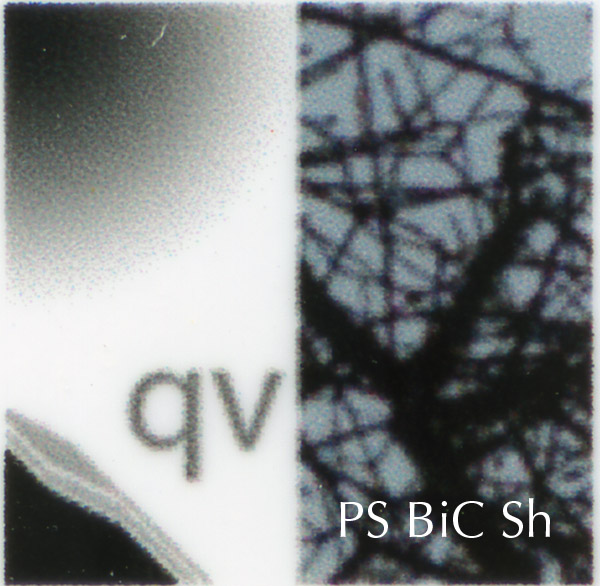What with stitching and 20+ megapixel backs, sometimes you have to res an image down to print it. I tested all four algorithms on a 480 ppi image resampled down to 360 ppi. Instead of using bicubic smoother in Photoshop, I used bicubic sharper, which Adobe recommends for down-resing.
The results:
Photoshop Bicubic Sharper (above)
Perfect Resize (above)
Qimage Hybrid (above)
Qimage Fusion (above)
The analysis:
Bicubic sharper does the best job with the radial gradient, with Perfect Resize coming in second, followed by QI hybrid and then QI fusion.
Perfect Resize does the best job with the letters. If you value smoothness highly, bicubic sharper is in second place. If you value crispness and can tolerate some jaggedness, then the two Qimage algorithms are tied for second.
Bicubic does the best job with the diagonal lines, followed by perfect resize. The two QI algorithms are both pretty mushy.
Bicubic produces the least mottling in the sky, followed by Perfect Resize, then the two Qimage algorithms. Surprisingly, bicubic also does the best job with the branches, followed by Perfect Resize. Both the Qimage algorithms fatten up the branches, and introduce little bits of sky color in them.




Leave a Reply